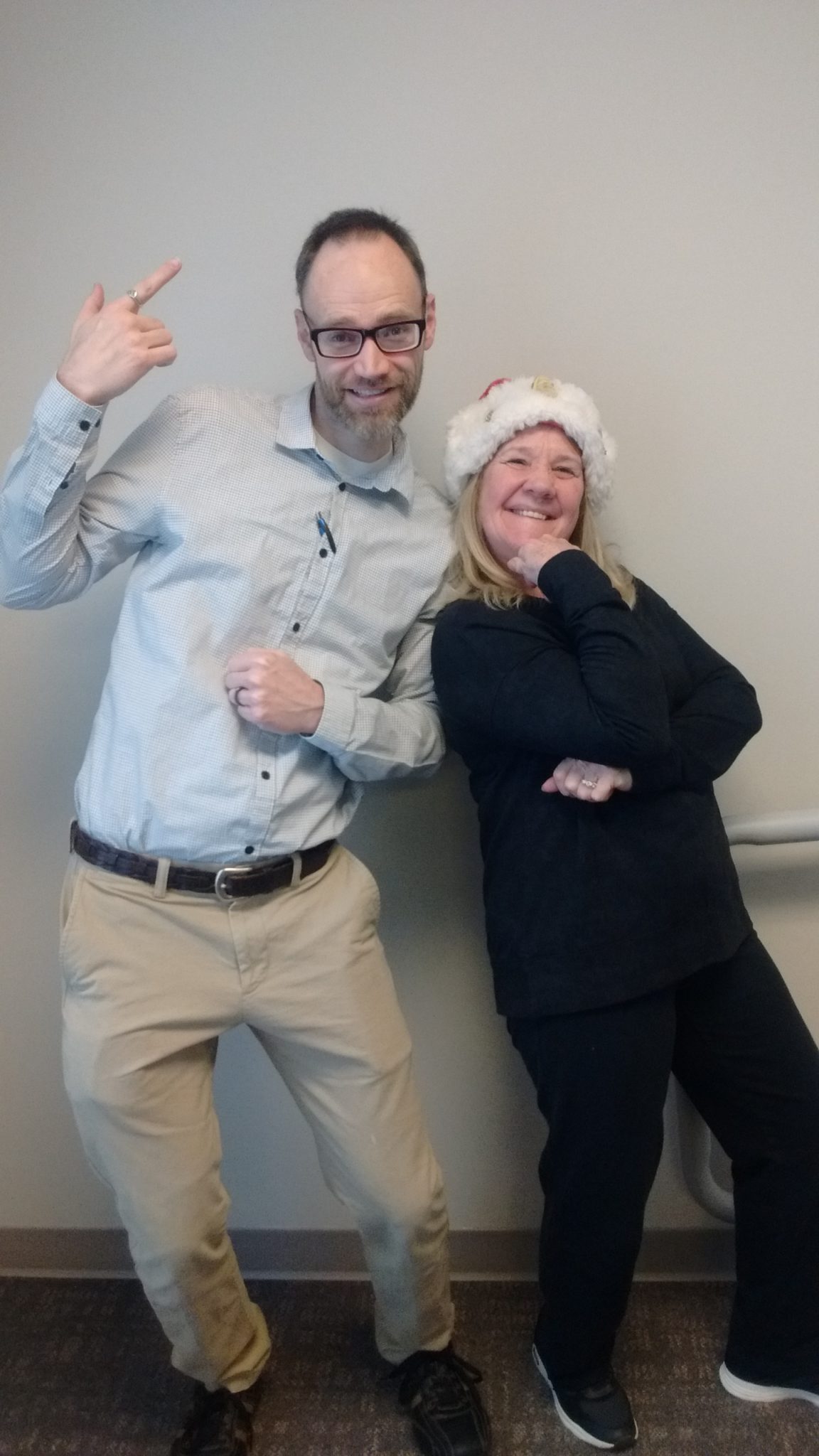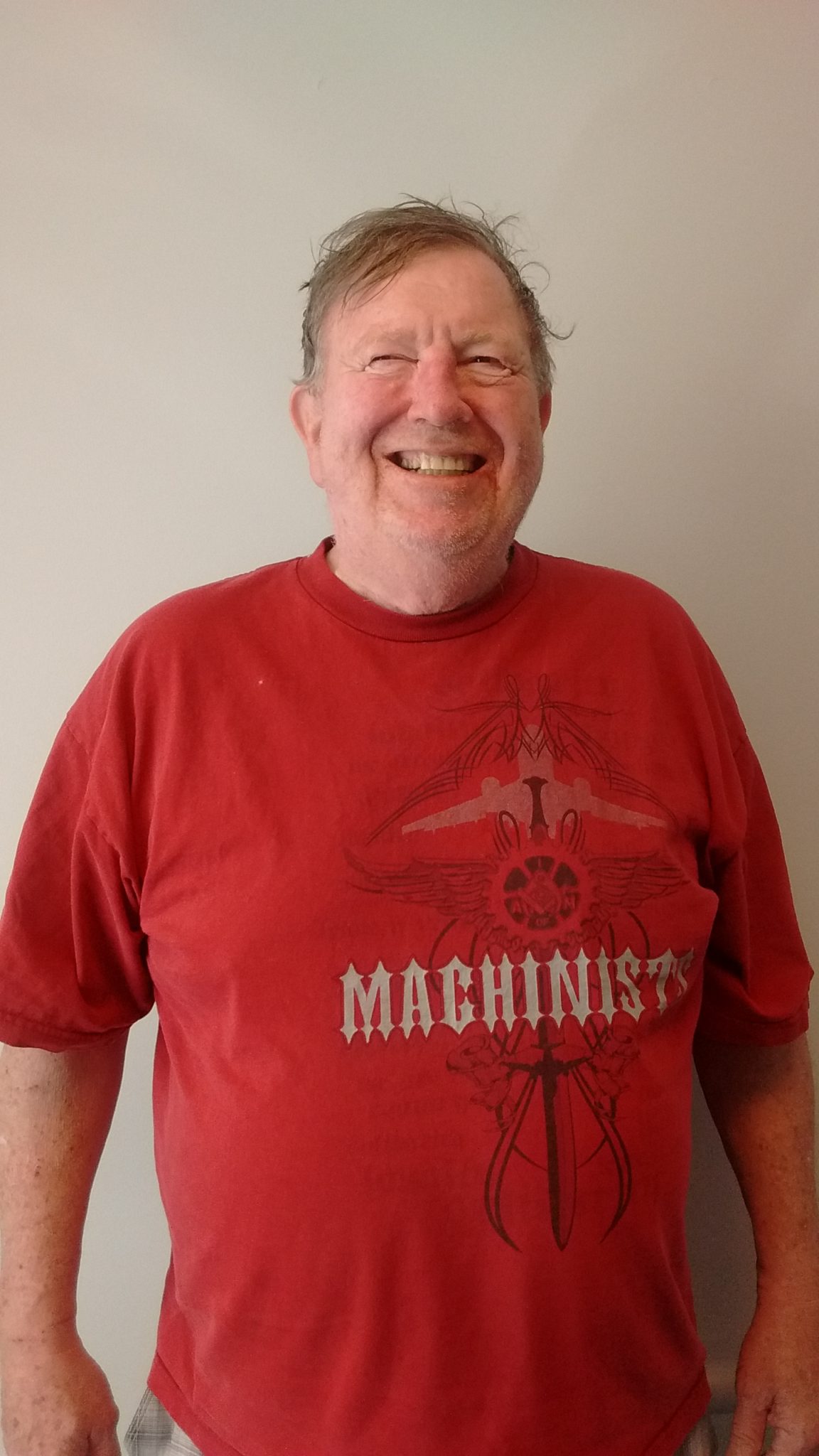Regain Your Independence Through Mobility
Introduction
As we celebrate our country’s independence this month, lets take a minute to celebrate our personal independence because of our mobility, or begin the steps to regain it. How many of us have been in a situation that kept us from doing the activities that we wanted to do? I have. I’ve had injuries that prevented me from participating in sports as well as limited my everyday activities such as driving, walking, and even made activities of daily living; such as showering difficult to impossible. I’ve also experienced the debilitating pains of a herniated disc in my back which made simple movements; such as transitioning from standing to sitting, rolling over, or picking something up from the floor extremely painful. I understand, this is not a fun place to be. In your mind all you want to do is lie down and not move, that's how I felt. But not moving leads to more pain and being immobile which further limits our independence. So, we must keep moving.
Moving Decreases Pain
There is time when rest is appropriate and necessary for heal however, the period of immobility and rest is usually at the beginning of the healing time frame. Moving can be easier said than done when you’re hurting, I get it, but there’s three things you need to remember when you feel like not moving. 1. Movement is medicine – movement keeps our muscles loose and our joints lubricated thus making it easier to be mobile. 2. Pain does not mean harm – our brains decide if we feel pain and sometimes it sends the pain signals because it thinks we need to be protected, even when there's nothing wrong and no physical reason to hurt. The phrase, “it hurts, but I’m OK” needs to be your motto. 3. Deciding to not move is relinquishing your mobility freedom to your pain. We have the tools to help you regain your freedom from pain and keep your mobility, so you can do the activities that bring you joy.
What is Happening to Our Bodies When We Don't Move
Think about a piece of taffy. When you first take it out of the wrapper it is usually fairly firm, right? But, as you squish and stretch and fold the taffy it becomes more pliable and easier manipulate.
Like the taffy, when we don't move our tissues harden. Our joints get stiff and painful, our muscles shorten and lose elasticity, and other connective tissue can harden as well. Along with the tightness, we also lose muscular strength making it more difficult to move, not just because we're tight, but also because we have less strength to move.
These reactions to not moving can then lead to movement disfunctions that impact the way we walk, bend, and function. However, also like the taffy, the more we move and stretch the easier it becomes to move and stretch. As we move our joints receive more synovial fluid which lubricates our joints, making it easier and more comfortable to move and our muscle become more flexible and stronger which also make it easier to move. We can see that even though sitting might sound good initially, it's actually doing more harm than good.
Which Exercises are Best to Maintain Independence
I have a book that provides several exercises to give you a full body workout for strengthening, as well as a book about stretching. Both can be found on our books page. Flexibility and strength are equally important in maintaining independence. There has to be a good balance between the two. Here are a few stretching and strengthening exercise I feel will keep you moving, active, and enjoying life on your journey to independence.
Exercises
Hip Flexor Stretch
The hip flexors are commonly tight due to the amount of sitting that we do. Having tight hip flexors can lead to your pelvis rolling forward which extends your lower back which may lead to lower back pain. Tight hip flexors can also change the way we walk due to tightness causing our legs to turn outwardly.
This stretch is done by putting a chair or stool (without wheels) in the doorway. Place your hands on the doorframe, then place your right foot on the chair/stool. From this position, shift your body forward while keeping your hands in place, your chest up, and your hips under your trunk until a stretch is felt in the front of your left hip. Return to the starting position. Make sure you are not bending at the hips forward or backward. The whole body should be moving together as one unit. Also, make sure your left foot is pointing straight forward. Complete this stretch on each side.
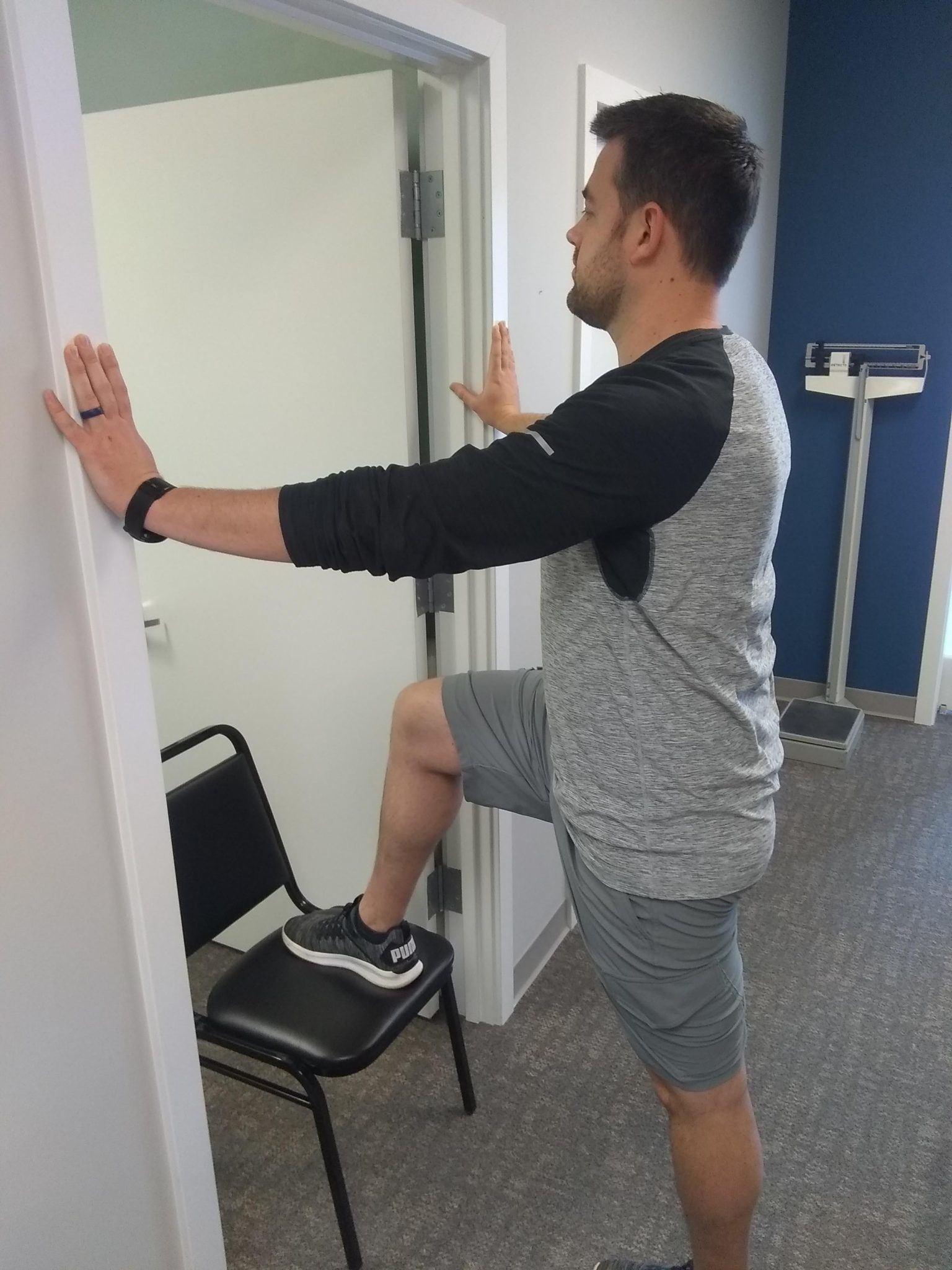
Hip Flexor Stretch Starting Position
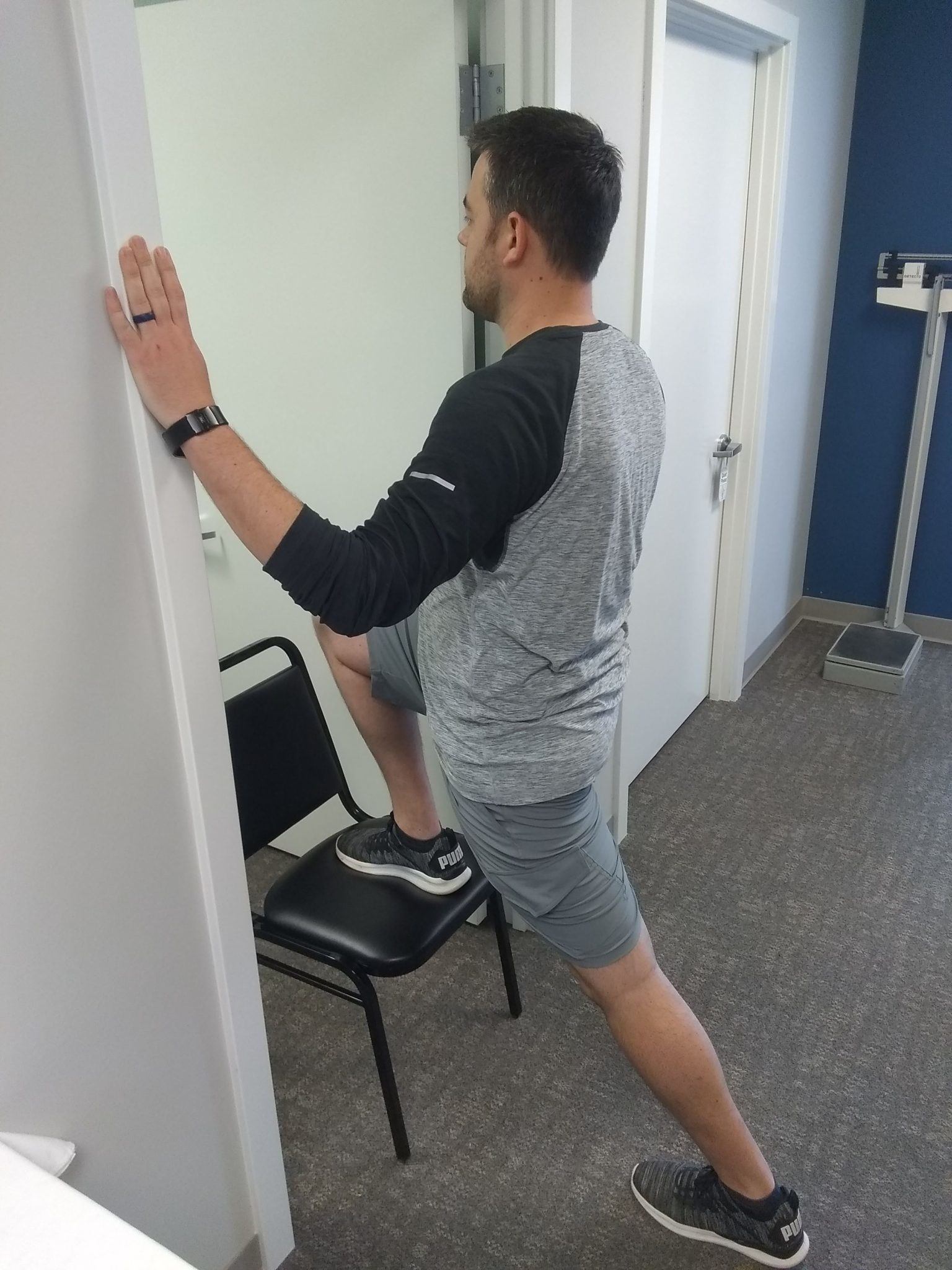
Hip Flexor Stretch Ending Position
Kitchen Sink Stretch
Stand at your sink or other surface that is about hip height. Place your hands on the surface, take a few steps back and bring your right foot across the front of your left foot. Push your hips back until you feel a moderate stretch. Looking at the floor or up may change where you feel this stretch. Return to the starting position. You may feel this stretch in your shoulders, lats, mid-back, low-back, glutes, hamstrings, calves, or anywhere else you may feel tight.
Make sure your hips are not rotating as your chest comes toward the floor. Your hips should be coming straight back without twisting, and your feet should be back far enough that you feel stable while performing this exercise. If you feel like you are going to fall backward; or like you have to hold on tight, so you don't fall back, then bring your feet further back. You should be able to have your chest parallel to the floor without feeling unstable. Complete this motion with both the right and left foot in front.
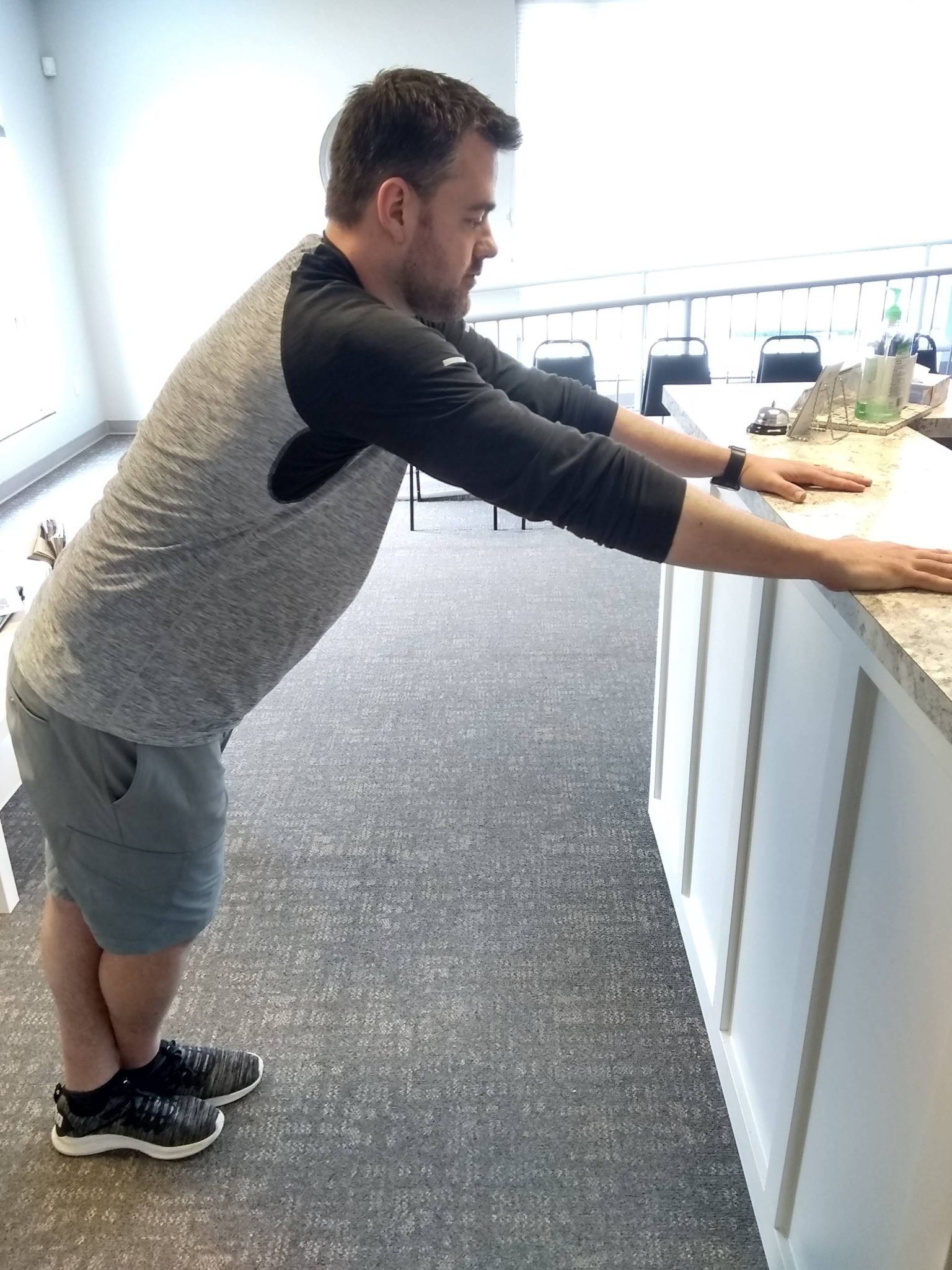
Kitchen Sink Starting Position
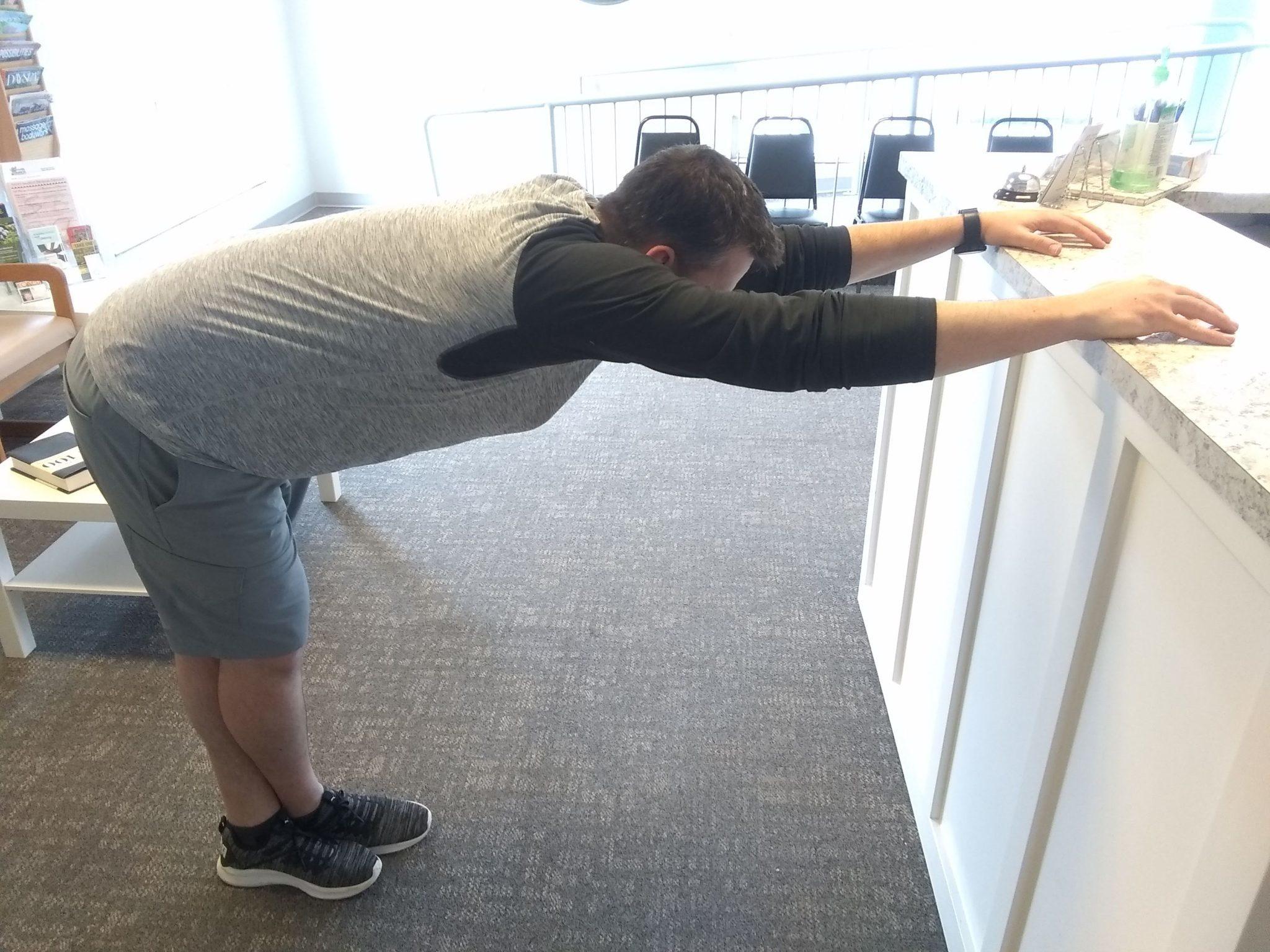
Kitchen Sink Stretch Ending Position
Pec Stretch
Stand with your left foot slightly forward and with your right arm straight out to the side, hold the door frame. Bring your shoulders down and back by squeezing your shoulder blades together as you rotate your trunk to the left. You should feel this stretch in the front of your right chest and shoulder. You may feel the stretch in the upper arm as well. Return to the starting position. Do not let your shoulder rise or rotate as you rotate your trunk. Complete this motion on each side.
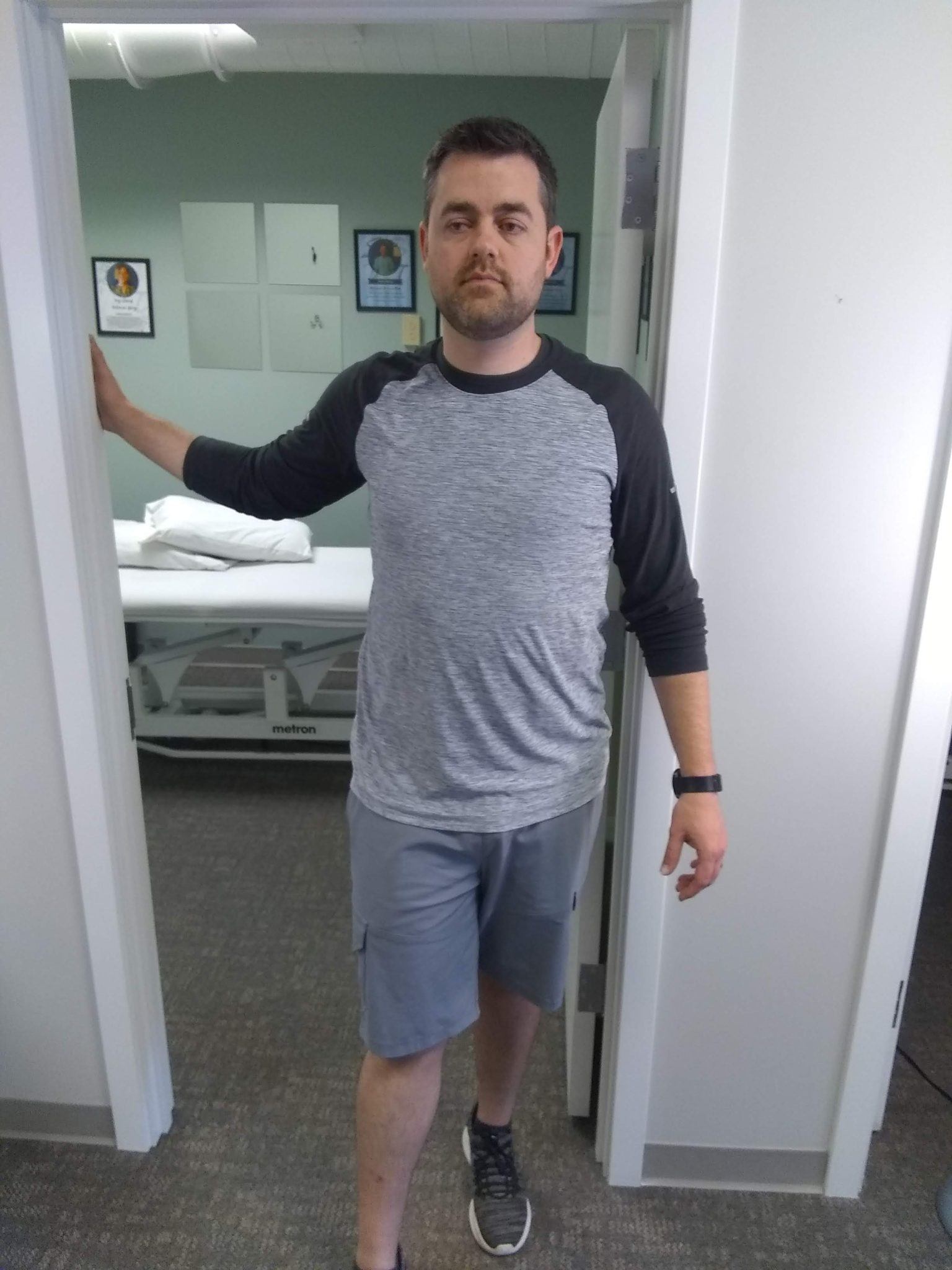
Pec Stretch Beginning Position
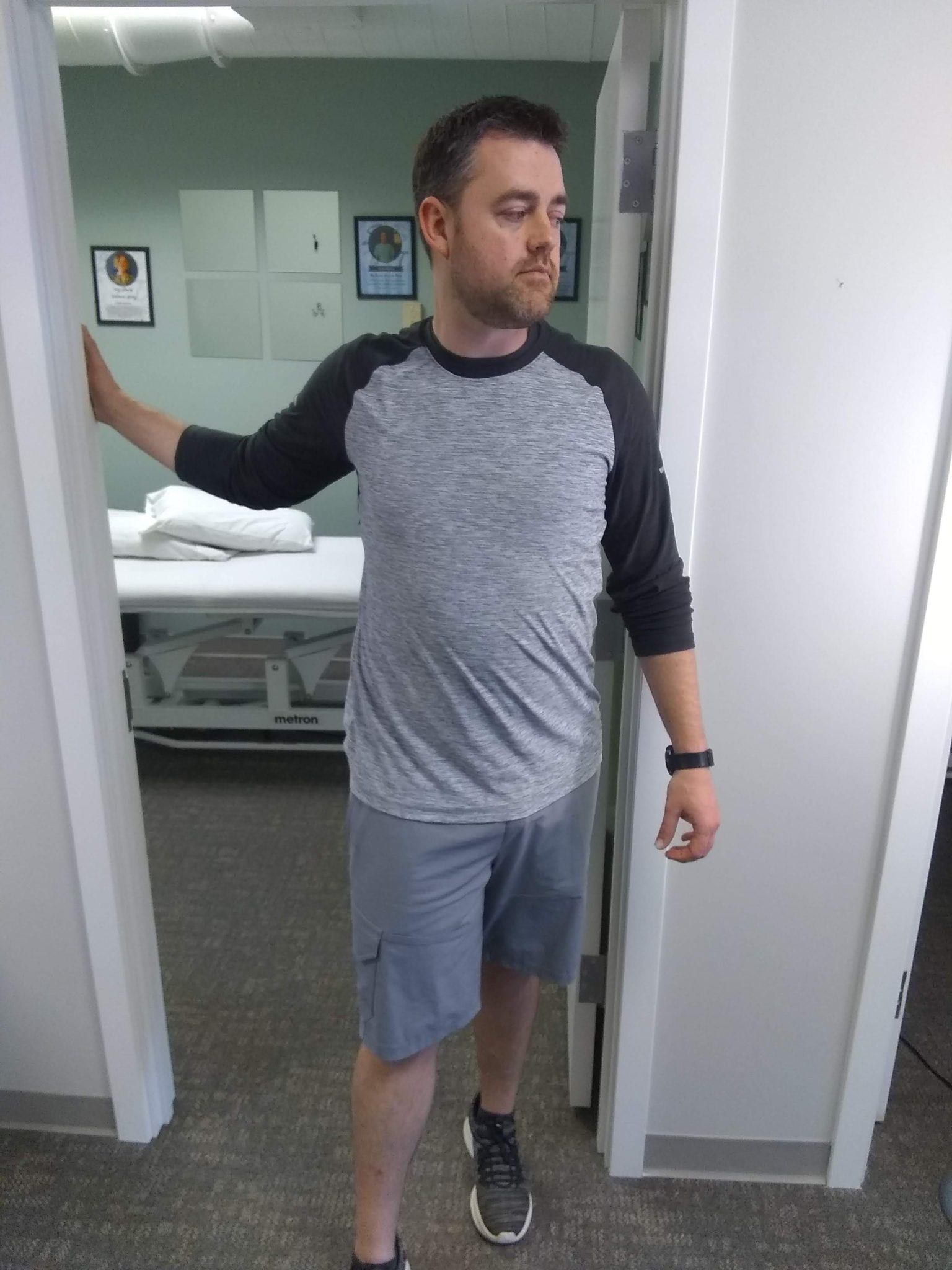
Pec Stretch Ending Position
Squats
This exercise is meant to strengthen your glutes and quads however, you may feel this in your hamstrings and core as well.
Stand with your feet about shoulder width apart. Keep your chest up and your back straight as you push your hips back and bend your knees. Try to get your knees to at least a 90° bend and thighs parallel to the floor. Go as low as you are comfortable going, then quickly stand back up to the starting position. As you are squatting, make sure you are not leaning to one side or the other. Your weight should be evenly distributed between both legs. Also, make sure that your knees stay behind your toes. This will prevent undue stress on your knees. This exercise can be done with hands close to your chest or your arms out in front of you to help with maintaining balance. You can also hold on to a countertop or other sturdy surface to further help with balance.
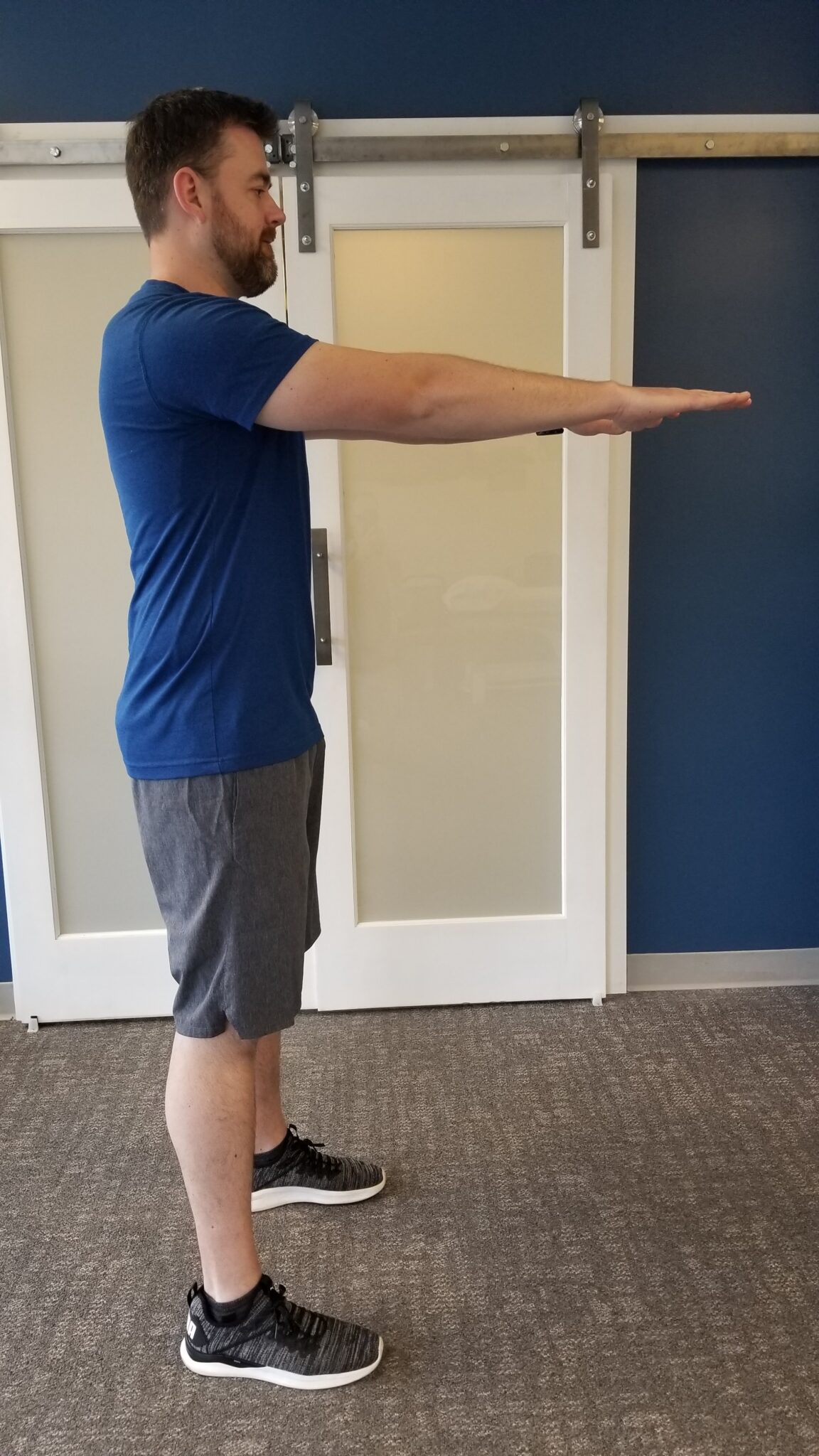
Squat Starting Position
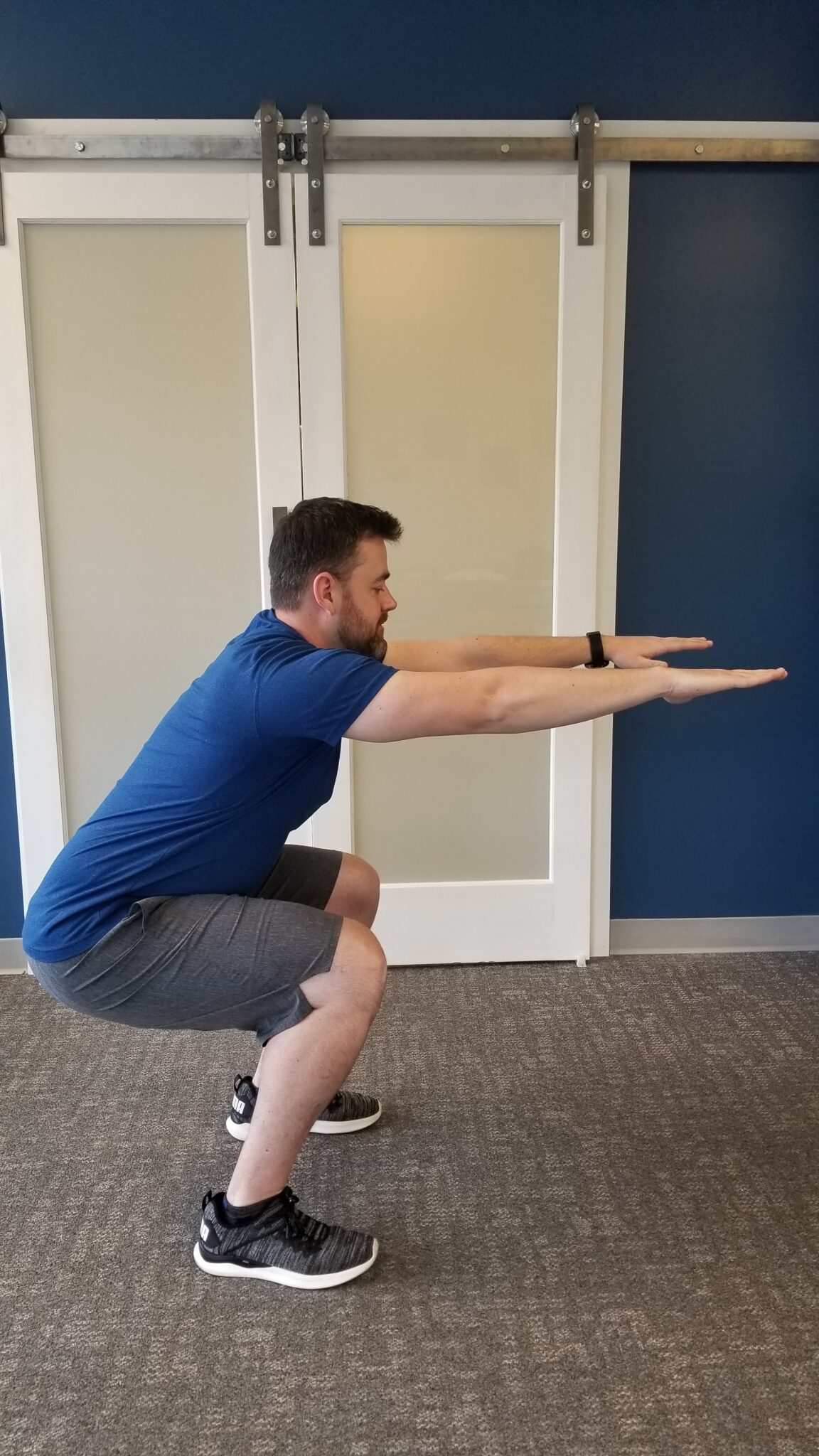
Squat Ending Position
Bridges
The purpose of this exercise is to strengthen your glute muscles. Your glutes extend your hips and assist with maintaining good posture by helping you stand up straight.
Lie on your back with your knees bent and your feet flat. Push your feet into the surface you're lying on; whether it is your bed, couch, or floor, as you push your pelvis toward the ceiling, thus straightening your hips. Hold your position at the highest point for a brief second and squeeze your bottom together before lowering back to the starting point. Your head, shoulders, and feet should remain in contact with the surface throughout the exercise while your hips/pelvis are moving. You should straight from your knees to your shoulders at your highest point of the exercise.
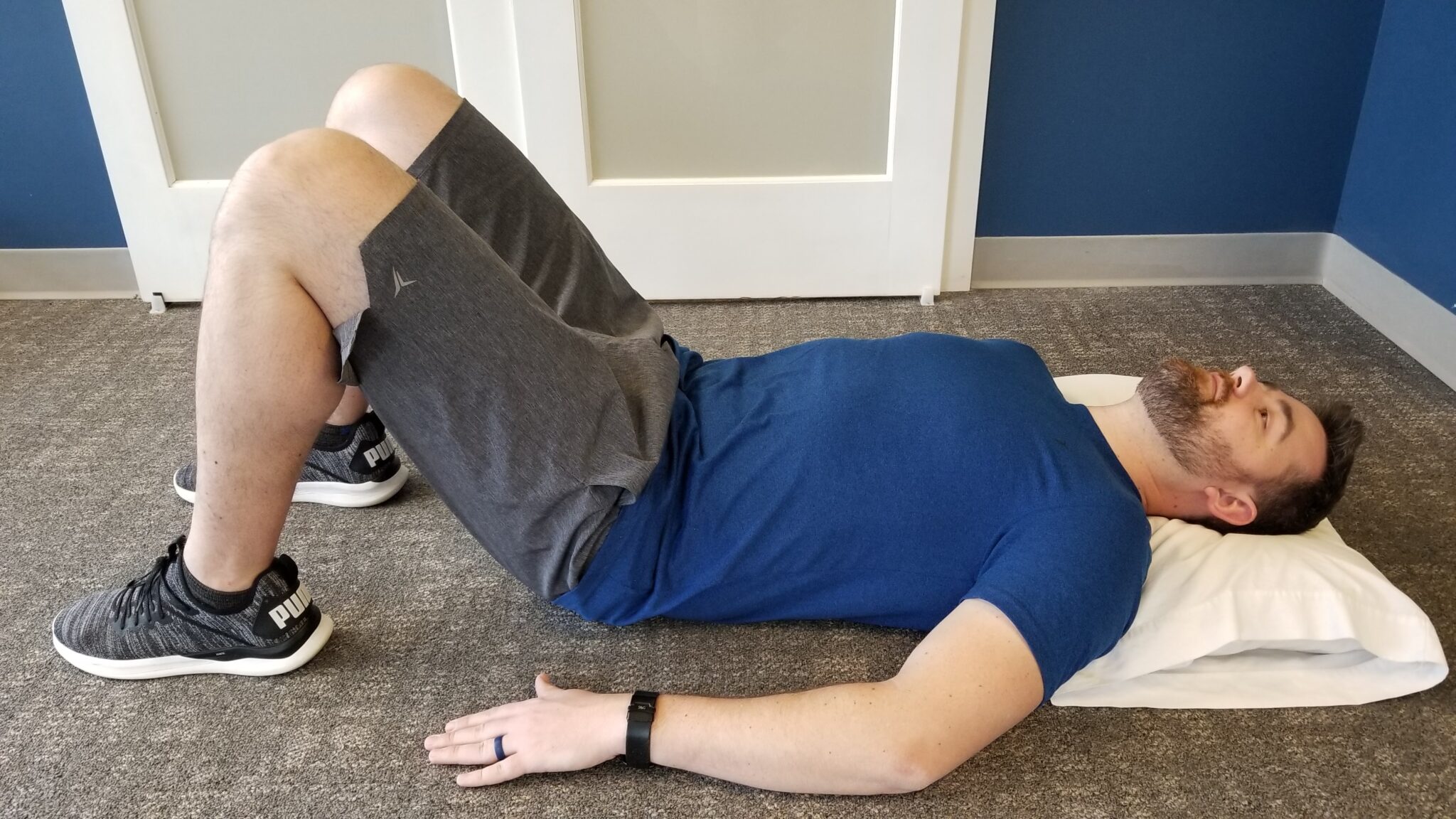
Bridges Starting Position
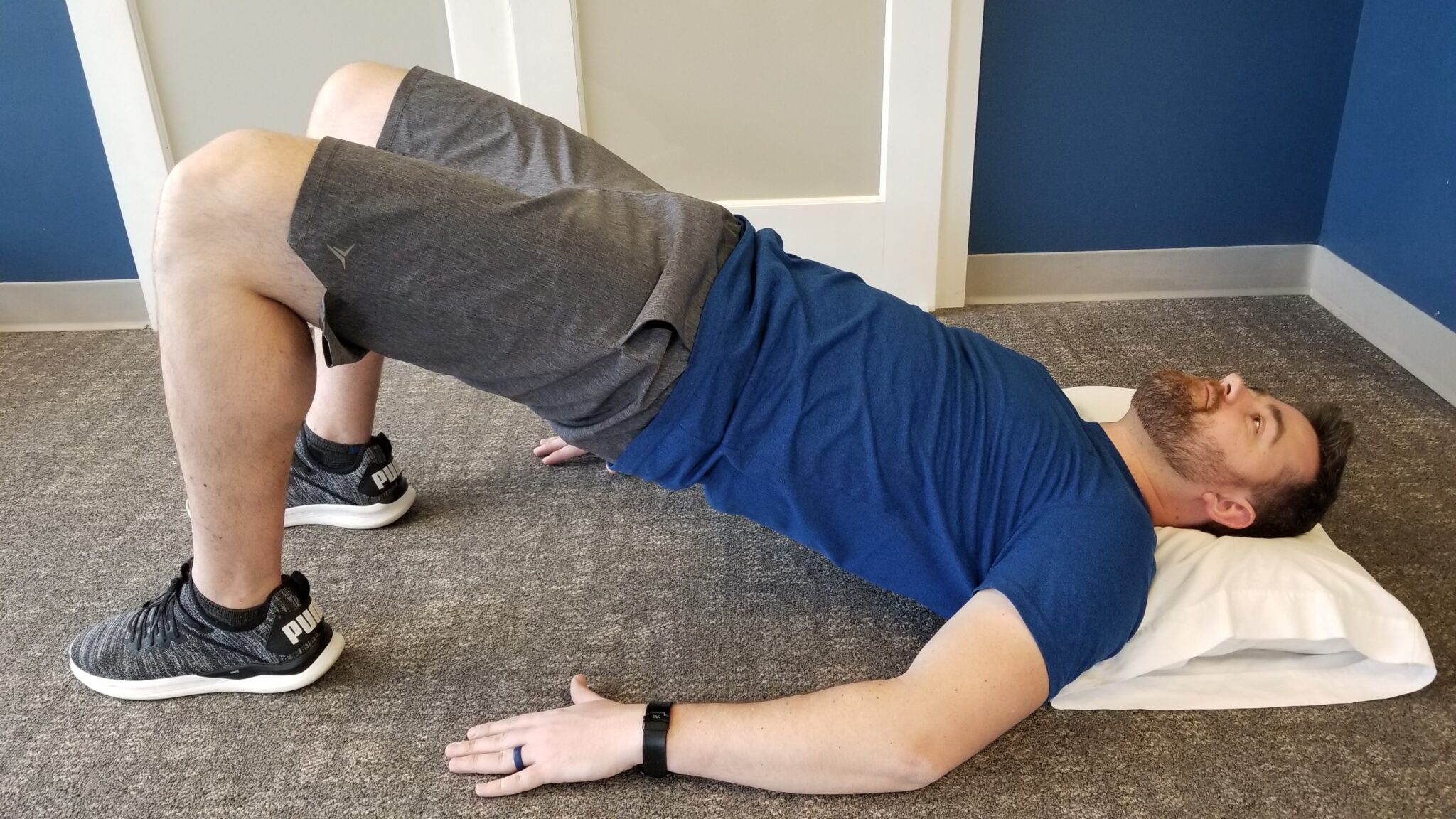
Bridges Ending Position
Pelvic Tilts
This exercise is meant to target your deep core muscles. mainly the transverse abdominis (TA). The TA is connected to your spine and wraps around your lower trunk. It acts as a girdle to provide support to your trunk and spine. Having a strong TA is critical for good posture.
Lie down on your back with your knees bent and your feet flat. Place your thumbs at the top of your hips, then move them in about one inch so you can no longer feel bone. Now, bring your belly button in toward your spine and roll your pelvis like you were trying to look at your belt buckle. You should feel the muscle under your thumb get firm and press against your thumbs. This is the TA and is an indicator that you are doing the exercise correctly. You can also place one hand under the small of your back and try to press your spine into your hand as an indicator that you are doing it correctly. Once you are doing this correctly, hold this muscle contraction for 10 seconds without holding your breath, rest for a few seconds, then hold the contraction again. Do this process 10 times. Work up to holding for 1 minute 3 times.
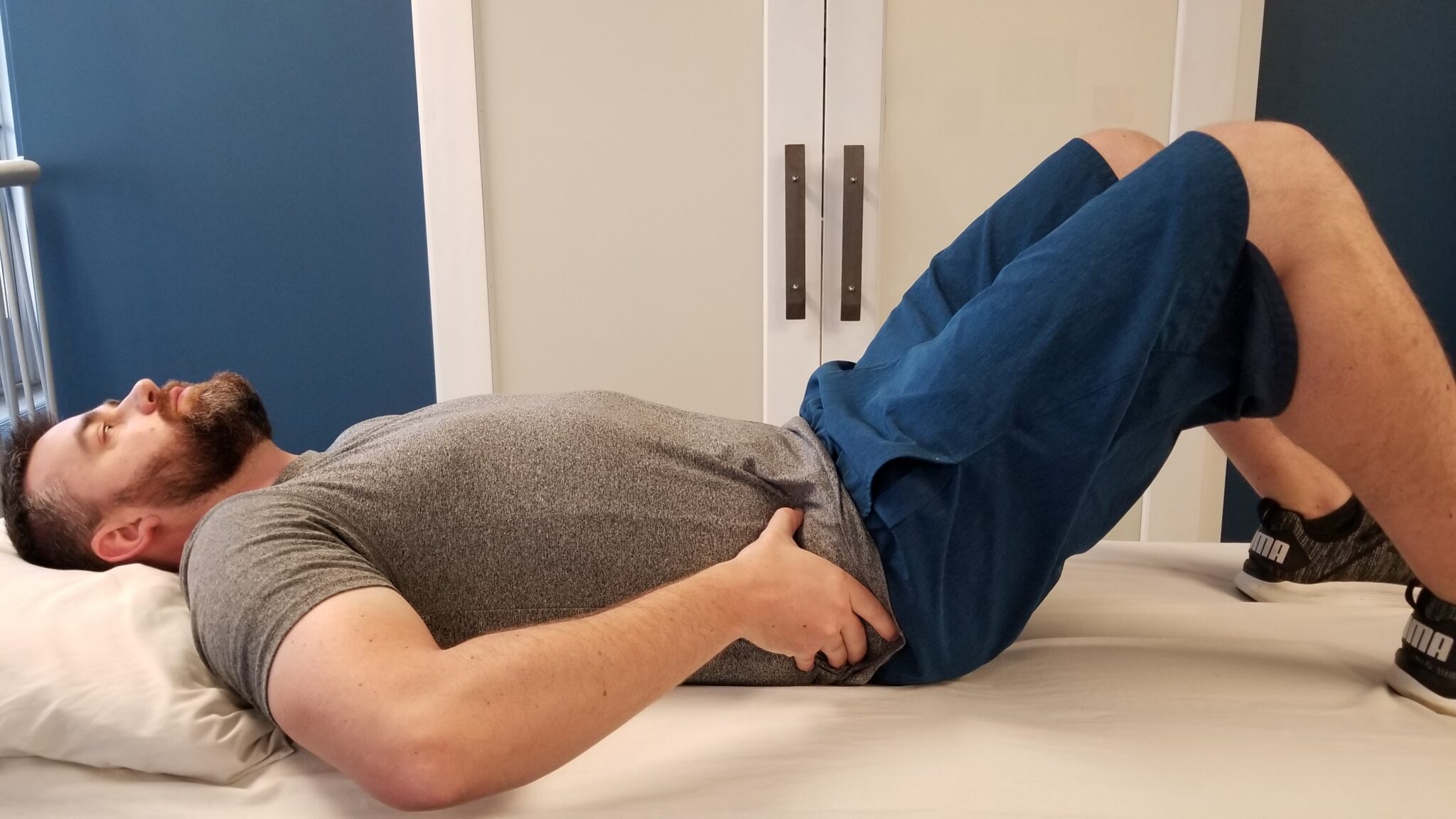
Use thumbs to feel TA activation
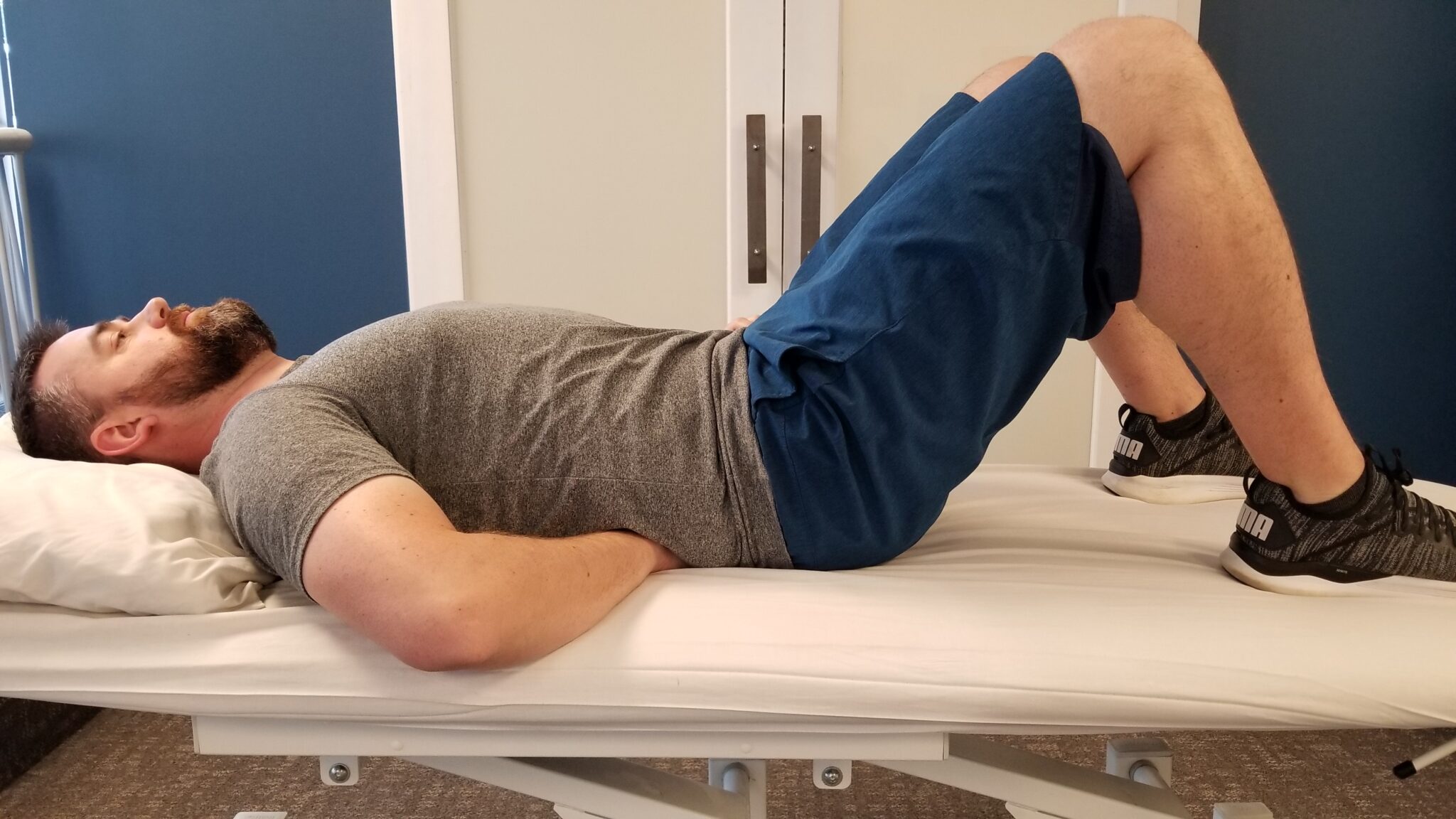
Apply pressure to hand with small of back
Exercise Recommendations
Stretches
Hold each stretch for 30 seconds up to 3 times or do a dynamic stretch by holding the stretch for 1-2 seconds 10-15 times.
Strengthening
Most of these exercises are focused on strengthening muscles that require stamina. It would be best to focus on increasing the muscular endurance for these exercises which should be higher repetitions (reps) at lower resistance. You can also start by doing the exercises for 30 seconds at a time and working up to 1-2 minutes sets. You should also start at working at 1-2 sets and working up to 3-4 sets.
Conclusion
Strengthening your upper body is also important however, I believe strengthening your legs and core is the best place to start when it comes to mobility and independence.
We want to help you reach your goals and keep you moving and independent. If you are having mobility problems and would like help, make an appointment to see how we can help you. We also have a brand new balance workshop that you might be interested in as well. You can sign-up using this link. https://event.webinarjam.com/register/12/qyz64sp

